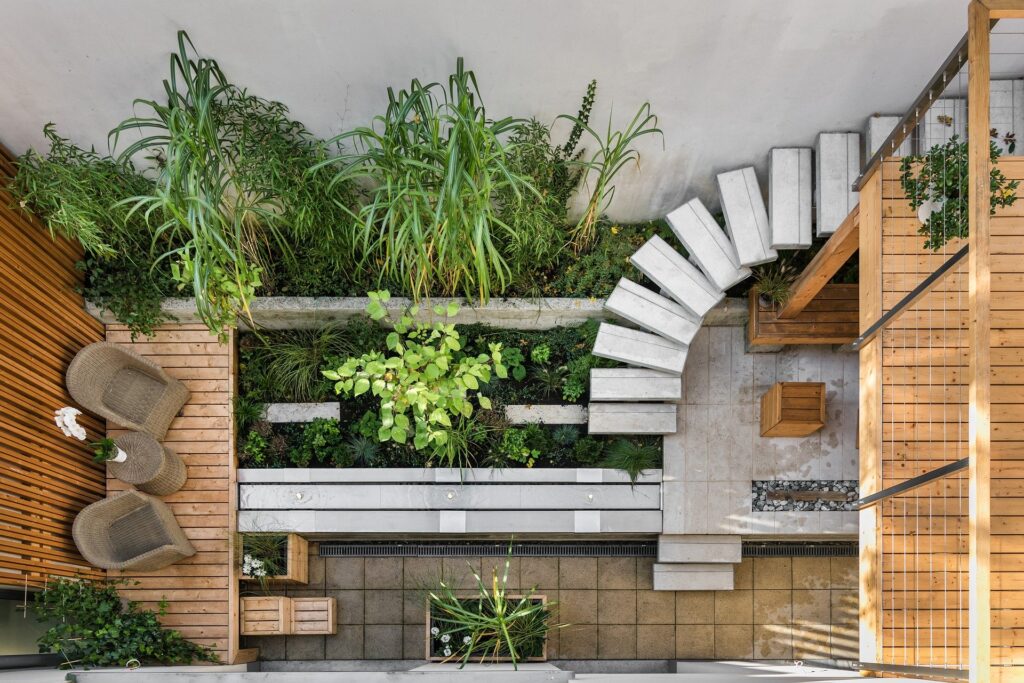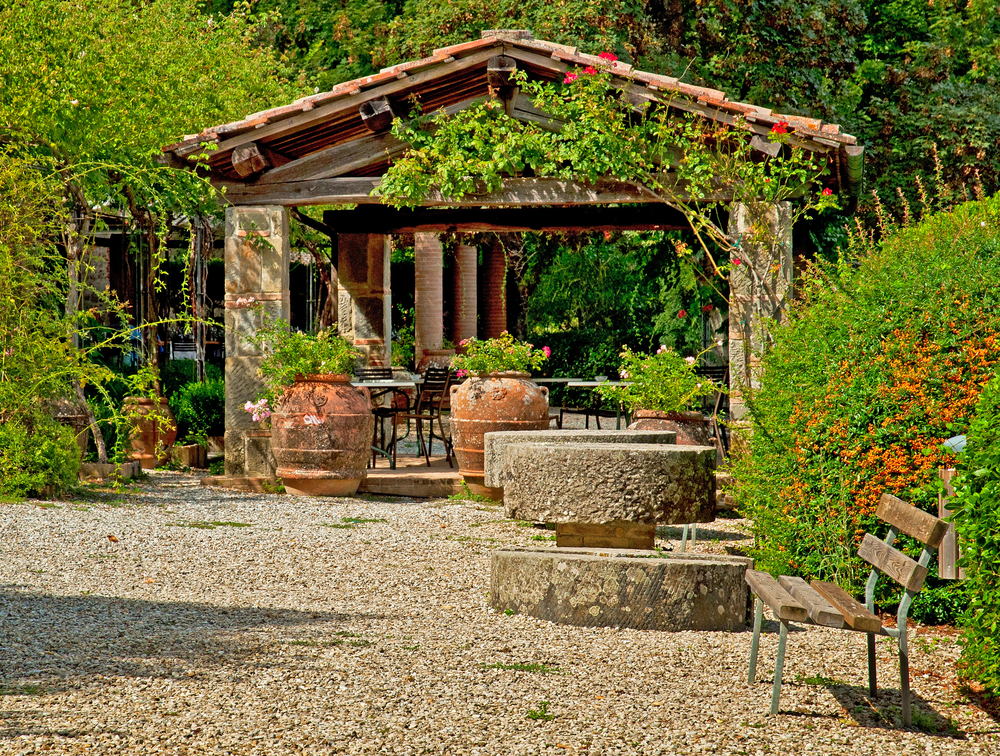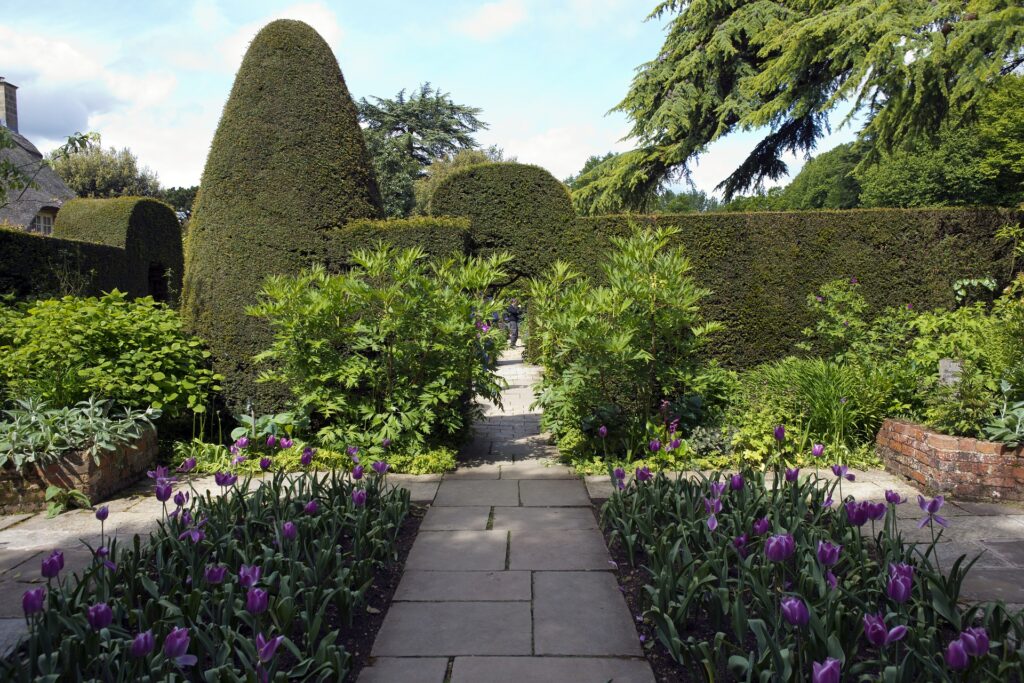Are you looking for a new way to spruce up your outdoor space? Railway sleepers are a dynamic landscaping tool that can help you create an eye-catching, unique outdoor space.
Whether you’re working on a feature wall, a raised flowerbed or a series of stairs, you can use these structures creatively.
In this article, we’ll provide five ways to use railway sleepers for landscaping so you can begin to think up your next big landscaping project!

5 Easy Ways To Use Railway Sleepers For Landscaping
What Are Railway Sleepers?
Before we get into how to use them, it’s a good idea to understand what a railway sleeper is and looks like.
A railway sleeper (a railroad tie) is a rectangular material used to support railroad tracks. They are typically made of wood, concrete, or steel and are placed perpendicular to the tracks to provide a stable base for the rails.
Sleepers are used for railways because they help distribute the train’s weight and maintain the tracks’ alignment. However, this also gives them adaptability for other functions requiring support – for example, landscaping and gardening.
Tools Required To Work With Railway Sleepers
Working with railway sleepers requires certain tools to ensure a successful project. Some of these include:
- A saw or sawing machine – will help you cut the sleepers to your desired size.
- Fasteners, spikes or bolts – depending on your project, you will need some form of fastening equipment to secure the sleepers in place.
- A drill – a drill will be important for helping you secure the sleepers.
- Lifting tools or manual labour assistance – large sleepers can be heavy and difficult to manoeuvre. It can be good practice to employ someone to help you or to use lifting equipment to help transport them.
- Protective gear – always have standard protective equipment such as steel-toe shoes and dust-proof glasses.
For landscaping, it is also a good idea to have a range of gardening tools to hand as this will help you to get a start on your new design. Shovels, trowels and soil will help you begin designing your outdoor space.

#1 Installing Railway Sleepers For Garden Edging
Using railway sleepers to create garden edging is a great way to add character to your garden. It’s also a simple project that requires little technical knowledge or specialist tools. To install garden edging, begin by:
- Mark the area of your garden where you want the edging to go.
- Dig a trench about 2 inches deep and 2 inches wide along the marked line.
- Place the sleeper flush against the edge of the trench. Ensure that it’s level using a spirit level or measuring device.
- Secure the sleeper using spikes or screws, depending on the material you want to use for your edging.
To finish your project, use gravel or soil to fill the area around the sleeper and compact it with a hand tamper until all the gaps are filled, and the sleeper is secure.
#2 Building Retaining Walls With Railway Sleepers
Railway sleepers are a great way to build retaining walls in your landscape. To begin to build a training wall, you’ll need the following:
- Cement mix
- Gravel & sand
- Enough sleepers to build your wall
Once you have these materials ready, it’s time to start building your retaining wall. Start by placing the first row of sleepers in your desired shape and filling the gaps with your cement mix.
Use gravel and sand to fill the sleepers as desired before repeating the process to build up your wall.

#3 Constructing Raised Beds With Railway Sleepers
Raised beds can be an attractive addition to any landscape and a fantastic way to show off your favourite flowers! To build a raised bed, follow these simple steps:
- Determine the size of the bed. Cut four pieces of railway sleeper to fit, ensuring they are all the same length.
- Dig two trenches parallel to each other in the desired shape of your bed, and ensure they are slightly wider than the sleepers and deep enough that only the top of the sleeper will be above ground level once inserted.
- Place one sleeper in each trench and secure them together using metal spikes or screws.
- Fill the area around each sleeper with soil, and pack it tightly around the edges for support.
Once your raised bed is finished and secured, you can start planting! You can create a beautiful addition to your garden landscape with creativity and hard work.
#4 Forming Steps With Railway Sleepers
Railway sleepers can also form steps, creating rustic charm in any garden. Some of the key ways to build steps include:
- Measure the required area for the steps.
- Dig a shallow trench along the desired route. Ensure this path is sloped slightly downwards and progresses away from your home.
- Place the sleepers in the trench and secure them at the edges with screws or nails to hold them firmly where you want them.
- Depending on your desired look, fill in any gaps with gravel or soil, and prevent them from moving around once weight is placed on them.
You may also add a light coating of a wood preservative such as varnishing or stain for extra durability – although this isn’t essential for outdoor use, it’ll help it last longer!
#5 Enhancing Decks With Railway Sleepers
Railway sleepers can also add a rustic charm to your decking. They’re the perfect solution for creating comfortable seating areas and building walls, steps and other structures.
As detailed above, sleepers can create framed garden beds on your decking. This can be useful for things such as herb gardens for barbecuing or vegetable gardens for little ones to learn about gardening!
Get creative with your decking.

Conclusion
In conclusion, railway sleepers are fantastic for landscaping projects as they offer durability, strength and a unique, rustic aesthetic.
Landscaping projects using sleepers can be as simple or complex as you wish, but with the correct tools and some inspiration – we’re confident anyone can use railway sleepers for landscaping their space.
What will your first project look like?
